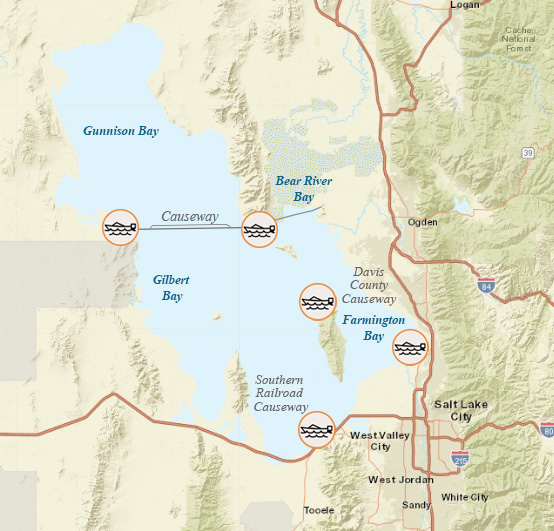Great Salt Lake Hydro Mapper
At low lake levels (4,194 feet and below), illegal use of OHVs on the lake bed becomes a law enforcement issue. Despite the fact the use of all-terrain vehicles is not allowed on sovereign lands, off-highway vehicle use increases as the dry lake bed exposes a perceived increase in lands available for off-road use.
As lake levels rise or fall below normal lake thresholds (4,198–4,204 feet), opportunities to mount search-and-rescue operations decrease. Although higher lake levels are not usually a concern, at 4,210 feet, the GSL Marina would start to flood; significant wave action could cause temporary flooding at lower water levels (approximately 4,204 feet). Additionally, at low water levels (below 4,198 feet), portions of the bioherm would be exposed or would be close to the lake’s surface, creating additional navigational hazards along the eastern edge of the lake. At 4,192 feet, rescue boats would not be able to access the lake using the marina and at 4,189 feet, all search-and-rescue operations would cease (Shear 2011).
Other potential search-and-rescue marinas would suffer from similar issues at low lake levels. At elevations below 4,194 feet, most marinas are either nonviable for rescue vehicles or would result in boat impact to shallow shelves/bioherms or potential grounding outside the marinas.

Approximate locations of marinas. Icons surrounded by an orange circle indicate current lake level has an adverse effect.

Information on this page is from the Final Great Salt Lake Comprehensive Management Plan and Record of Decision.